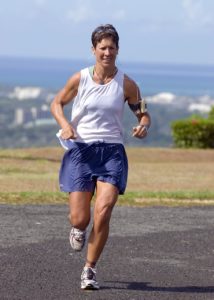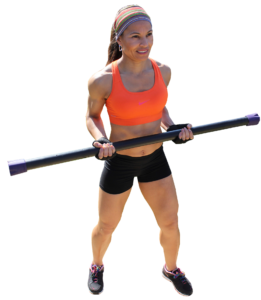What Exercise Should You Be Doing After 50
The mistake many make is stopping exercise altogether as they age.
This is one of the worst things you can do to your body at a time when exercise is needed more than ever.
The aging process hastens breakdown of muscle and connective tissue, and can leave you immobile if you sit there and do nothing about it.
Already over 50?
It is never too late to start improving your health with exercise.
The following are exercises you should be incorporating into your fitness plan:
Aerobics
Aerobics, also known as cardio or cardiovascular exercise, is important at any point of life, but even more so as we get older.
Aerobic exercise plays an important part in maintaining the health of various organ systems, including the heart, lungs and brain.
Though there are many different types of aerobic exercise, it is best to start with a low-impact variety, to safeguard the safety of the joints until it is established that you can handle more.
Be sure to include the following types of aerobics:
• Swimming
• Cycling (including stationary bikes)
• Walking
• Jogging
Strength Training
Far too many people associate strength training with becoming a bodybuilder or some other strong man type of athlete, but in reality your body needs resistance to stay functional.
People that weight train regularly, especially older persons, have a greatly decreased risk of fractures, pain, and immobility due to muscle atrophy.
You need to perform at least basic strength training, which entails using your bodyweight. Added resistance is good, but do it only when you feel you are capable.
Be sure to include the following movements into your regime:
• Squats
• Bench presses
• Push ups
• Pull up/ assisted pull ups
• Lat pull downs shoulder presses
• Deadlifts / hyperextensions
• Triceps presses
• Dumbbell curls
If you have preexisting joint issues, you can substitute one exercise with another. For example, removing the squat and using leg extensions instead.
Flexibility Training
The single most underrated aspect of any training program has got to be the flexibility component. The reasons are simple enough to understand, after all, you don’t see any immediate benefit to doing it, so why should you? But there’s another way to look at flexibility training- as insurance.
Think of flexibility training as the insurance that safeguards you in the eventuality of the worst outcome, in this case immobility or injury.
Flexibility training has numerous benefits on a body aged over 50, such as:
• Decreases Pain Following Training- part of the reason muscles and joints ache after a workout is because of an inability of muscles to elongate back, or when they do they place undue stress on connective tissue.
• Promotes Balance- loss of balance occurs frequently as we age, due in large part to loss of muscle mass, but also to stiff connective tissue. Flexibility training can significantly help you maintain balance as you age.
Include these in your flexibility training to reap the benefits:
• Dynamic Stretches- these are stretches performed prior to your workout to get the muscle and connective tissue loose and ready for activity. This significantly helps to reduce the risk of injury during an active workout set.
• Static Stretches- these are stretches performed after working out a muscle group, to relieve muscle tension. Static stretches help stretch the muscle fibers and reduce pain after your workout.
Conclusion
Maintaining the integrity of the joints, heart and muscles requires incorporating some aspects of all the exercises listed above.
Staying mobile will definitely contribute to optimal health and longevity in the future.
